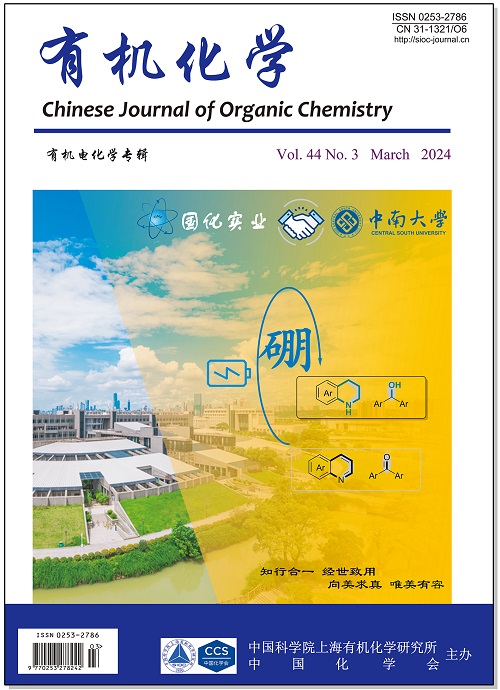-
-
 封面介绍An electrochemical method using Lewis base-borane (LB-BH3) as a hydrogen donor to establish a universal and simple quinoline transfer hydrogenation process was reported by Chen, Yang, Ye, Chen, Xiang and Yang on page 966. This method not only enables the reduction of various quinolines but also can be applied to the reduction of functionalities, such as C=O, N=N and C=C bond.
封面介绍An electrochemical method using Lewis base-borane (LB-BH3) as a hydrogen donor to establish a universal and simple quinoline transfer hydrogenation process was reported by Chen, Yang, Ye, Chen, Xiang and Yang on page 966. This method not only enables the reduction of various quinolines but also can be applied to the reduction of functionalities, such as C=O, N=N and C=C bond. -
 封面介绍The common mechanism manifolds of electrochemical aromatic C(sp2)—H amination reactions are summarized by Zhu, Li, and Qiu on page 871. The reaction examples are classified according to the type of amine sources. The prospects and challenges in this field are provided.
封面介绍The common mechanism manifolds of electrochemical aromatic C(sp2)—H amination reactions are summarized by Zhu, Li, and Qiu on page 871. The reaction examples are classified according to the type of amine sources. The prospects and challenges in this field are provided. -
 封面介绍The gradual application of organic electrochemistry as a green and efficient reaction tool in the modification of amino acids or peptides is described by Fang, Huang, Hu, and Ruan on page 903, specifically addressing the chemical and regioselectivity problems existing in existing biocoupling strategies.
封面介绍The gradual application of organic electrochemistry as a green and efficient reaction tool in the modification of amino acids or peptides is described by Fang, Huang, Hu, and Ruan on page 903, specifically addressing the chemical and regioselectivity problems existing in existing biocoupling strategies. -
 封面介绍The electrochemical arene C(sp2)—H bromination of glycine derivatives at room temperature is reported by Huang, Cai, Wang, Zhang, Wang, Xia, Jin, Li and Liu on page 989. Under mild reaction conditions, a series of brominated N-aryl glycine amides, N-aryl glycine esters, and dipeptide were smoothly synthesized using tetrabu-tylammonium bromide or tetrabutylammonium tribromide as Br sources and electrolytes.
封面介绍The electrochemical arene C(sp2)—H bromination of glycine derivatives at room temperature is reported by Huang, Cai, Wang, Zhang, Wang, Xia, Jin, Li and Liu on page 989. Under mild reaction conditions, a series of brominated N-aryl glycine amides, N-aryl glycine esters, and dipeptide were smoothly synthesized using tetrabu-tylammonium bromide or tetrabutylammonium tribromide as Br sources and electrolytes.
-
-
本期栏目
栏目
综述与进展
研究论文
亮点述评





























